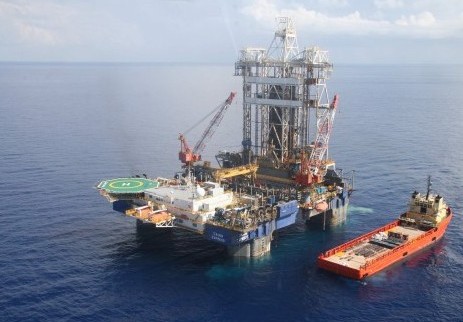Apparently, we’ve punched through three of those boundaries already, two of them big time. See here. You can read the entire paper in the journal Nature here.
Now, largely because of a rapidly growing reliance on fossil fuels and industrialized forms of agriculture, human activities have reached a level that could damage the systems that keep Earth in the desirable Holocene state.
Note that of the two causes listed, one of them is industrial agriculture, which is also wholly dependent on fossil fuels. I don’t have the answer but it surely isn’t mixing the products of industrial agriculture with fossil fuels and burning the unholy union in our SUVs.
What image does the term “industrialized forms of agriculture” conjure-up in your mind? I suspect that for most Americans it’s corn. For me it is biofuel, which in America is synonymous with corn ethanol and soy biodiesel. In Europe it might be wheat (Hunger for biofuels will gobble up wheat surplus), in Kenya it might be jatropha (How a Biofuel ‘Miracle’ Ruined Kenyan Farmers), in Tanzania it could be just about anything (Public Fury Halts Biofuel Onslaught On Farmers), in Indonesia, the world’s fourth third largest GHG emitter, palm oil will soon drive the wild orangutan to extinction and in South America, sugarcane is king.
We have tried to identify the Earth-system processes and associated thresholds, which, if crossed, could generate unacceptable environmental change.
The nine processes that define these planetary boundaries are as follows:
1) climate change
2) rate of biodiversity loss (terrestrial and marine)
3) interference with the nitrogen and phosphorus cycles
4) stratospheric ozone depletion
5) ocean acidification
6) global freshwater use
7) change in land use
8) chemical pollution
9) atmospheric aerosol loading
Items 1, 2 and 3 have already exceeded the boundaries, and not by just a little bit.
Records of Earth history show that large-scale ocean anoxic events occur when critical thresholds of phosphorus inflow to the oceans are crossed. This potentially explains past mass extinctions of marine life.
The air we breath is about 80% nitrogen, 20% oxygen. The nitrogen is mostly inert, just taking up space in our lungs. We 6.7 billion human beings (soon to be 9 billion) have been grabbing this harmless nitrogen gas in the air and turning it into harmful nitrogen compounds in things like sewage from both human beings and our domesticated animals, and agricultural runoff from nitrogen fertilizers and (another form of sewage) into our rivers, lakes, and oceans.
At about 400 locations worldwide, agricultural fertilizer and other pollutants flowing into rivers and deltas have created underwater conditions so low in oxygen that aquatic life can’t survive. These locations are called dead zones …If we did no biofuels, and we just allowed for food production to increase …you still can’t meet the hypoxia goals in the Gulf of Mexico. You still need to take mitigation actions even if we didn’t produce biofuels.
You can’t kill the oceans and expect life on land as we know it to survive. It has happened before. The geologic record has shown that. It is called anoxia. The oceans lose their ability to hold enough oxygen to keep anaerobic bacteria at bay. These organisms emit things like sulfur compounds (the rotten egg smell) instead of CO2 as metabolism waste products and will kill all oxygen breathing lifeforms in the oceans.
Today’s biofuels simultaneously exacerbate biodiversity loss and the nitrogen putrefaction of oceans and waterways, all the while releasing massive amounts of greenhouse gases that had been locked up in forest and grassland carbon sinks to boot. How stupid is that? If you’ve been holding your breath waiting for politicians to save us, well, you can at least exhale now.
Cross posted from Biodiversivist


